Honda’s XL750 Transalp has made it to America. The new-for-2024 model packs plenty of performance into a bike that lists for a buck less than $10,000. Boasting ride-by-wire, which enables multiple ride modes, and a new 755cc parallel twin motor based on the Honda Hornet from Europe, the Transalp is set to compete in the mid-size ADV class. In short, Honda has cataloged what’s missing on Yamaha’s Tenere 700, which also debuted at $9,999, and included it on the XL750 Transalp. The bike fills a gap between Honda’s Africa Twin line and the CBX500. Stephan Edwards first reported it as coming to these shores this past June.

Tailoring the Transalp
Let’s start the overview with something that many riders now see as required equipment: ride modes. The Transalp features five—sport, standard, rain, gravel–and one that riders can create for themselves. Each mode modifies engine braking and ABS activity, as well as the engine power delivery. Honda claims that switching modes on the XL750 is “super easy” but doesn’t say whether you have to stop first. Big Red also gave the Transalp their Honda Selectable Torque Control. HSTC provides the ability to dial in some wheel spin for off-road work or prevent it when the road gets slick.
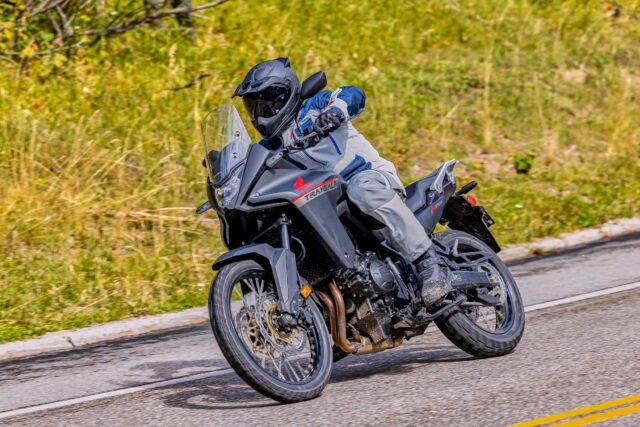
XL750 Power on Tap
The Transalp is no slouch in the power department, pumping out around 90 horsepower from its compact 755cc engine. Honda claims the powerplant “delivers torque everywhere from idle to redline.” What’s not to like about that? The motor has a 270-degree firing order, with vibration handled by a counterbalancer shaft running directly from the primary gear, eliminating an internal gear and saving weight. Also lightening the motor is Honda’s SOHC Unicam design that operates the twin’s eight valves. Honda played with the intake and fuel injection, too, using vortex airflow ducting to increase the speed of the intake air during low and mid-range operation. It’s said to improve both acceleration and throttle response. That same rev range gets an additional boost from high-pressure fuel injection. A slipper-assist clutch enhances control, and the bike is ready for the available quick shifter.

Rolling Stock
The XL750 runs on 21- and 18-inch rims, providing the owner with a range of tire choices. Showa products at each end control the ride. Up front is an SFF-CA fork with 43mm tubes and 7.9 inches of travel, while the rear is sprung by Honda’s Pro-Link setup using a shock with 7.1 inches of travel. The bike’s 8.3 inches of ground clearance should be enough to handle some challenges, but even with the Transalp’s adventure bent, it lacks even the smallest of skid pans.
ABS is standard on the XL750, with two modes tied to the ride modes, plus the ability to defeat rear-brake ABS. Front-wheel stopping power comes from twin 310-millimeter front discs grabbed by two-piston calipers. The rear binder has a 256-millimeter disc and a single-piston caliper.
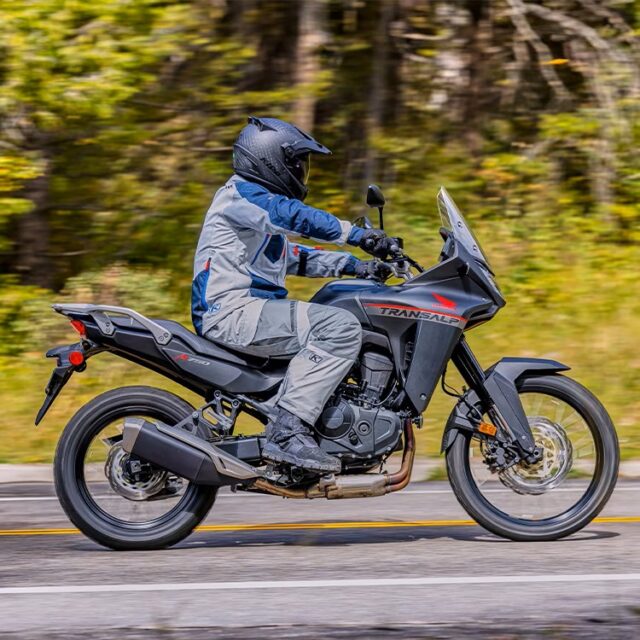
Transalp Cockpit
This wouldn’t be a modern moto without a TFT instrument display, nor would it be easy to access and control the onboard electronics. Honda fitted a 5-inch display with four display modes for this purpose. If their photo is any guide, there is plenty of data packed onto the screen—even a voltage meter. A weather-protected USB-C port under the passenger seat is another plus.
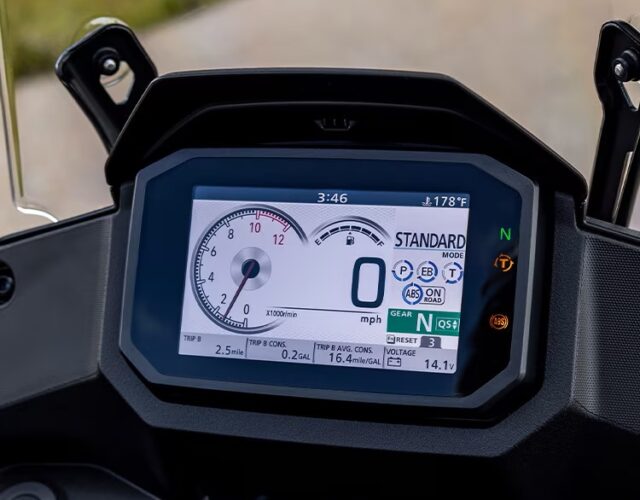
Considering that adventurers often do long days in the saddle, Honda paid attention to the Transalp seat. In their words, it is “a seat with a shape that’s both supportive enough for cornering and comfortable even when the miles stack up.” The standard seat height is 33.7 inches, with a 1.1-inch lower seat available.
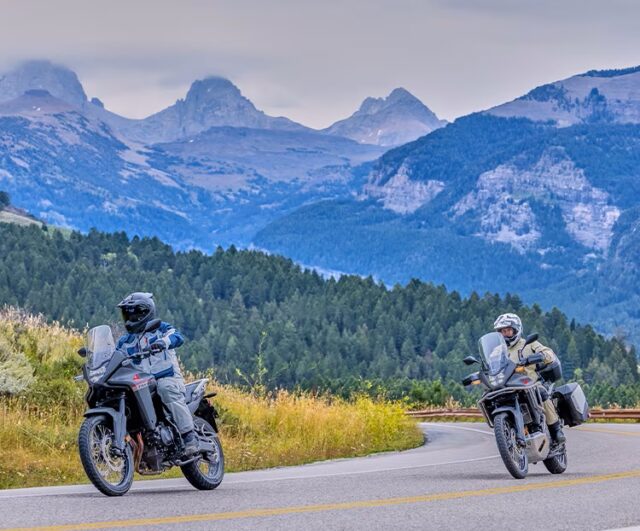
Also of Interest
Honda claims a ready-to-ride weight of 459 pounds for the XL750, which fits with the 750cc adventure class. It holds 4.5 gallons of fuel, which should be good for 200+ miles of safe-and-sane riding. Thinking ahead to the abuse an ADV bike might take, Honda placed the water pump out of harm’s way inside the alternator cover.
Make it Yours
To showcase the XL750 Transalp’s versatility, Honda offers five distinct accessory packages. Adventurers have the largest number of choices: guards for hands, engine, upper fairing, and radiator. Also, a radiator grille, skid plate, and enduro footpegs. Feel more like touring? Choose from panniers, a 12V socket, a tall windscreen, and a center stand.
Those looking for comfort can indulge in the tall windscreen, a windscreen deflector, a fairing air deflector, hand guards with deflectors, heated grips, a low seat, or comfort passenger pegs. Finally, for those not going far, there’s a City Collection. It includes a top case with multiple options, the 12V socket, and the center stand.
The new Transalp is available now in a single color for 2024: black.
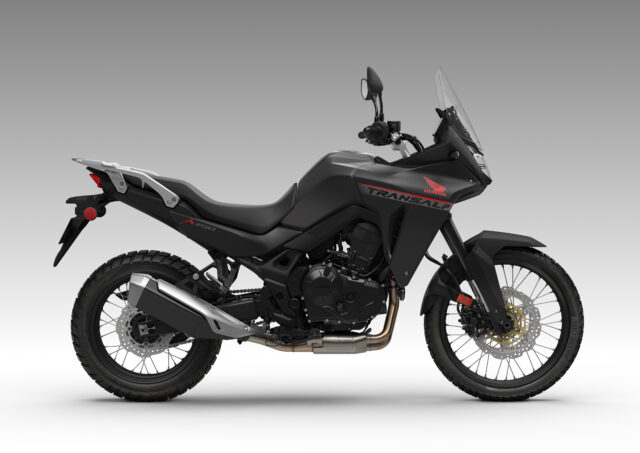
Our No Compromise Clause: We do not accept advertorial content or allow advertising to influence our coverage, and our contributors are guaranteed editorial independence. Overland International may earn a small commission from affiliate links included in this article. We appreciate your support.


